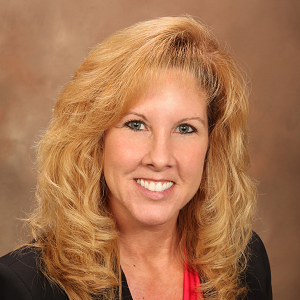Every credit union has its own story driven by its particular strategies, goals, and members. That means, when it comes to selecting a core provider, there are more than 4,000 different reasons why credit unions across the country make the choices they do.
But what really drives the decision to convert a core? What tips the scale in favor of one provider over another?
With these questions in mind, Callahan & Associates surveyed credit unions of all sizes from across the country, following up for more detail where needed, to discover the factors credit union leaders are prioritizing when making one of their organization’s biggest investments.

CUSA Federal Credit Union ($33.3M, Covington, LA) dedicated two years to its search process, finally converting from Fiserv to Sharetec in March 2023. Price differences were a major part of the decision, says CEO Jeana Rodivich.
“Much to our surprise, there was about a 40% reduction in expense,” she says, adding that CUSA’s leadership felt it had outgrown Fiserv’s system and were concerned about plans to move clients to the Portico platform.
Rodivich adds that improved processes and fewer steps to integration were also crucial.
“Our new core can submit files to our card processor to update account changes, new card orders, and more,” she says. “Previously we had to do all of that manually on each system.”
Additionally, Rodivich says members have a more robust mobile app banded to the credit union, and loan applications now flow directly into the loan platform, which has sped up processing.
Not Too Old, But Not A Startup
Pricing was a common theme, but one of the most frequent responses related to increased efficiency and easier integration with third-party vendors.
“Our members wanted a digital banking experience similar to what a big bank or a fintech might offer, like Chime or Chase or even American Express,” says the CEO of a mid-size credit union in the upper Midwest who asked to remain anonymous. “They wanted that experience where you could have card controls integrated right into the app. They didn’t want a companion app. They wanted integrated credit monitoring, personal financial management, and things like account aggregation for external accounts.”
Our members wanted a digital banking experience similar to what a big bank or a fintech might offer, like Chime or Chase or even American Express. They wanted that experience where you could have card controls integrated right into the app. They didn’t want a companion app.
When the credit union’s former provider said those features weren’t on the road map, it became clear it was time to find a new core. After more than a decade on its previous platform, the credit union recently switched to Corelation’s Keystone platform. It considered multiple providers, but a big factor that tipped the scales was Corelation founder John Landis’s experience and reputation.
“He’s written two previous cores, and his second core is still very, very prevalent,” the CEO says.
A strong reputation with other vendors and the performance of other shops on the platform was the icing on the cake.
“Corelation was kind of the Goldilocks core for us because it was new enough to be innovative and written in a modern way but not a startup,” the CEO says. “It was proven.”
Security And Integration
Although DuPage Credit Union ($575.2M, Naperville, IL) also prioritized integration, that wasn’t the only factor in the final decision to move from Fiserv to Jack Henry.

“Given the sensitive nature of financial data, strong security measures and compliance with regulations were required,” explains Frank Sposito, chief technology and security officer at DuPage. “We prioritized processors that offered comprehensive features tailored for credit unions, such as member management, loan processing, and compliance tools. The ability to support our specific operational needs was crucial.”
Ease of use for staff and members was also a priority, Sposito adds.
“We needed a system that could grow with our membership and adapt to changing demands without excessive hardware investments,” he says. “We looked at up-front and ongoing costs and sought a solution that provided the best value for our budget … ensuring the selected core processor would not only meet our current needs but also support our future growth as a credit union.”
Culture Is Key

Another key factor for many is culture. Yolo Federal Credit Union ($430.5M, Woodland, CA) recently converted from Finastra’s UltraData platform to Corelation’s Keystone platform, having spent four decades on UltraData. To hear CEO Jenee Rawlings tell it, the intangibles were almost as important as the business capabilities.
“Beyond the critical factors of functionality, security, and ease of integration, company culture and values are important and should align well with our own,” Rawlings says.
For IC Federal Credit Union ($609.0M, Fitchburg, MA), another recent convert to Corelation, an understanding of the credit union difference was key to making the sale.
“The vendor completely understood credit unions and didn’t lump us in with all financial institutions,” says CEO Chris Hendry. “It also caters only to credit unions and is small enough that we could trust its customer service model would actually meet our needs.”
Evaluating Core Processors? Peer Suite Has You Covered. Whether you’re a credit union evaluating core processing solutions or a supplier evaluating market share, Peer Suite is loaded with technology partner data that makes it easy to uncover deeper insights to fuel your strategies. Curious to learn more? Schedule a conversation with Callahan & Associates today. Learn more today.